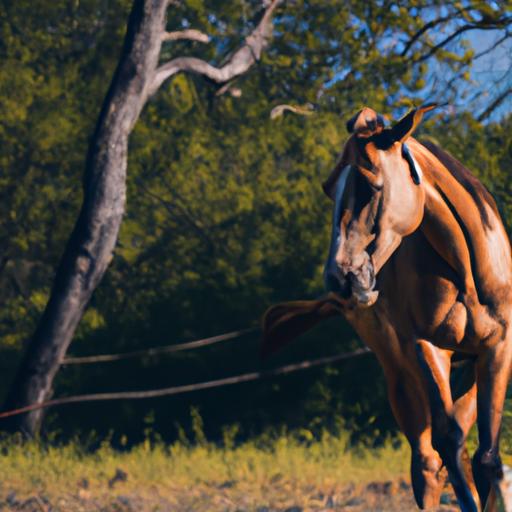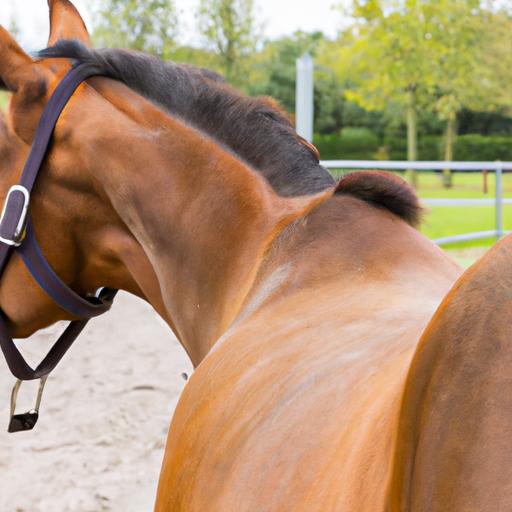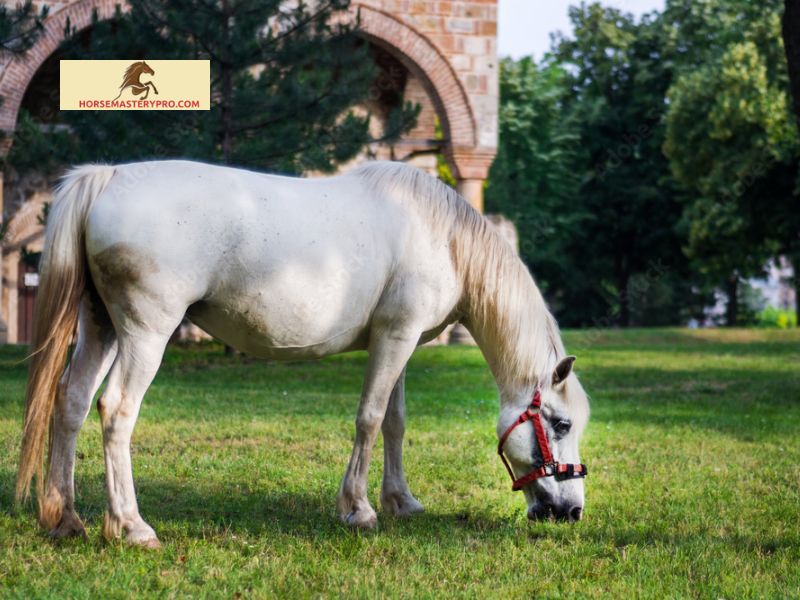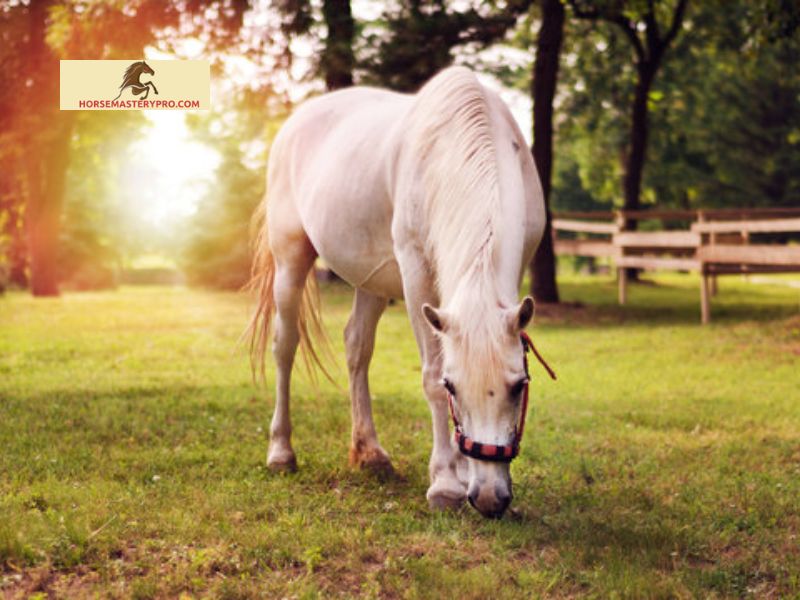Discover the symptoms of stringhalt in horses, including abnormal hind leg movements, walking difficulties, and muscle spasms. Learn more about this condition here.
what is a stringhalt in horses? Have you ever come across the term “stringhalt” when discussing horse health? If you’re unfamiliar with this condition, you’ve come to the right place. In this article, we’ll delve into the world of stringhalt in horses, exploring its definition and highlighting the importance of understanding this ailment.
A. Definition of Stringhalt in Horses
Stringhalt is a neuromuscular disorder that primarily affects horses, causing involuntary and exaggerated movements in their hind legs. These abnormal movements can range from jerking and flexing to exaggerated lifting and flicking. Imagine your horse’s hind legs suddenly springing up involuntarily, almost as if they were being pulled by an invisible string. That’s where the term “stringhalt” originates from.
B. Significance of Understanding Stringhalt in Horses
Understanding stringhalt is crucial for horse owners, riders, and equine professionals alike. By recognizing the symptoms and causes of stringhalt, we can provide the necessary care and support to affected horses, ensuring their well-being and preventing further complications. Moreover, early detection and appropriate treatment can significantly improve a horse’s quality of life, allowing them to continue engaging in their daily activities, whether it’s riding, competing, or simply enjoying their time in the pasture.
Stringhalt can be a distressing condition for both the horse and their caretakers. However, with knowledge and awareness, we can proactively address this issue and provide the best possible care for our equine companions. In the following sections, we will explore the causes, symptoms, diagnosis, and treatment options for stringhalt in horses, equipping you with the necessary information to navigate this condition with confidence.
Buckle up, as we embark on a journey to unravel the mysteries of stringhalt in horses, aiming to empower you with the knowledge needed to ensure the well-being of your beloved equine partners.
Remember, if you want to discover more about stringhalt in horses and how to manage this condition effectively, you’ve come to the right place. Stay tuned for the upcoming sections where we’ll explore the causes, symptoms, diagnosis, treatment, prevention, and prognosis of stringhalt in horses.
Stay informed, stay connected, and let’s master horsemanship together.
Please note that this article is intended for informational purposes only and should not substitute professional veterinary advice. If you suspect your horse may have stringhalt, consult a qualified veterinarian for a proper diagnosis and treatment plan.
Find more insightful articles and resources about horse care and training at horsemasterypro.com. Don’t miss out on our expert tips and tricks to elevate your horsemanship skills.
Causes of Stringhalt in Horses

When it comes to understanding stringhalt in horses, it’s essential to explore the various factors that can contribute to the development of this condition. Let’s take a closer look at the potential causes of stringhalt and how they can impact our equine friends.
A. Nervous System Disorders
One of the leading causes of stringhalt in horses is related to nervous system disorders. Conditions such as peripheral neuropathy, which affects the nerves outside the brain and spinal cord, can disrupt the normal coordination of the horse’s hind leg muscles. This disruption leads to the characteristic exaggerated movements associated with stringhalt. Other nervous system disorders, such as spinal cord lesions or traumas, can also contribute to the development of stringhalt.
B. Nutritional Imbalances
Imbalances in a horse’s diet can also play a role in the onset of stringhalt. In particular, deficiencies in essential nutrients like vitamin E and selenium have been linked to the development of muscular disorders, including stringhalt. These vital nutrients play a crucial role in maintaining the health and proper functioning of the horse’s muscles and nerves. Therefore, ensuring a well-balanced diet that meets the nutritional needs of your horse is essential in preventing stringhalt caused by nutritional imbalances.
C. Toxic Plant Ingestion
Certain plants can contain toxins that, when ingested by horses, can lead to the development of stringhalt. For example, the ingestion of flatweed, a common weed found in pastures, has been associated with the onset of stringhalt-like symptoms. Other toxic plants, such as onion grass or cherry tree leaves, may also contribute to the development of stringhalt. It’s crucial to be vigilant and ensure that your horse’s grazing areas are free from potentially harmful plants to minimize the risk of stringhalt.
By understanding the potential causes of stringhalt, we can take proactive measures to prevent its occurrence and mitigate its effects. In the next section, we will explore the symptoms of stringhalt in horses, enabling you to identify this condition early on and seek appropriate veterinary care.
Stay tuned for the upcoming sections where we will dive deeper into the symptoms, diagnosis, treatment, prevention, and prognosis of stringhalt in horses.
Remember, if you suspect your horse may have stringhalt, consult a qualified veterinarian for a proper diagnosis and treatment plan.
Visit horsemasterypro.com for more valuable insights and resources to enhance your horsemanship skills and ensure the well-being of your equine companion.
Diagnosing Stringhalt in Horses

When it comes to the well-being of our equine companions, early and accurate diagnosis is paramount. In this section, we will explore the various methods used by veterinarians to diagnose stringhalt in horses, ensuring prompt and effective treatment.
A. Physical Examination by a Veterinarian
The first step in diagnosing stringhalt involves a thorough physical examination by a qualified veterinarian. During this examination, the veterinarian will carefully observe the horse’s gait, paying close attention to any abnormal hind leg movements. They will assess the range of motion, coordination, and overall functionality of the affected limbs. By closely examining the horse’s movements and behavior, the veterinarian can gather valuable clues to aid in the diagnosis.
B. Observation of Horse’s Gait and Movements
Observing the horse’s gait and movements is crucial in the diagnostic process. Veterinarians will watch the horse walk, trot, and canter, looking for any signs of difficulty or abnormality. Stringhalt often presents itself as exaggerated and jerky movements in the hind legs, which become more prominent when the horse is in motion. By closely observing the horse’s gait, veterinarians can assess the severity and frequency of these abnormal movements.
C. Additional Diagnostic Tests, if Required
In some cases, additional diagnostic tests may be necessary to confirm the diagnosis or rule out other potential conditions. This could include radiographs (X-rays) to evaluate the bones and joints, ultrasound to examine soft tissues, or even nerve blocks to identify specific areas of concern. These tests can provide a more comprehensive understanding of the condition, guiding the veterinarian in developing an appropriate treatment plan.
By employing a combination of physical examination, gait observation, and potentially additional diagnostic tests, veterinarians can accurately diagnose stringhalt in horses. This precise diagnosis serves as the foundation for effective treatment and management strategies, ensuring the best possible outcome for our equine companions.
In the next section, we will delve into the treatment and management options available for horses with stringhalt. Stay tuned to discover how we can support and alleviate the symptoms of this condition, enabling our horses to lead happy and comfortable lives.
Remember, always consult a qualified veterinarian for an accurate diagnosis and tailored treatment plan for your horse.
Continue reading to learn more about the treatment and management options for horses with stringhalt in the upcoming section.
Find more insightful articles and resources about horse care and training at horsemasterypro.com. Enhance your horsemanship skills with expert tips and tricks from our dedicated team.
Treatment and Management of Stringhalt in Horses

When it comes to addressing stringhalt in horses, a comprehensive treatment and management plan is essential. The approach may vary depending on the severity of the condition and the individual horse’s needs. In this section, we will explore different strategies to alleviate symptoms and improve the overall well-being of horses affected by stringhalt.
A. Medication Options to Alleviate Symptoms
In some cases, medications can be prescribed to manage the symptoms associated with stringhalt. These medications aim to reduce muscle spasms and tremors, providing relief to the affected horse. Muscle relaxants and anti-inflammatory drugs are commonly used to help minimize the exaggerated movements and improve the horse’s gait. However, it is crucial to work closely with a veterinarian to determine the most suitable medication and dosage for your horse’s specific condition.
B. Surgical Procedures for Severe Cases
In severe cases of stringhalt where conservative treatments fail to yield desired results, surgical intervention may be considered. One such procedure is the neurectomy, where a specific nerve responsible for the exaggerated movements in the horse’s hind legs is severed. This surgical option aims to control the symptoms of stringhalt, allowing the horse to move more comfortably. However, it is important to note that neurectomy is a last resort and should only be performed by a skilled and experienced veterinary surgeon.
C. Dietary Adjustments and Nutritional Supplements
Diet and nutrition play a vital role in the overall health and well-being of horses, including those affected by stringhalt. A balanced diet that meets the horse’s nutritional requirements can support their overall muscle and nerve function. Additionally, certain nutritional supplements such as magnesium and vitamin E have shown potential in managing neuromuscular disorders. Consultation with a veterinarian or equine nutritionist can help determine the best dietary adjustments and supplements for your horse’s specific needs.
Remember, the treatment and management of stringhalt should always be tailored to the individual horse. What works for one horse may not necessarily work for another. It is important to work closely with a qualified veterinarian to develop a comprehensive plan that takes into account the horse’s overall health, severity of the condition, and specific requirements.
In the next section, we will explore preventative measures and the long-term outlook for horses affected by stringhalt. Stay tuned to discover how you can minimize the risk and impact of this condition on your equine companion.
Please note that the information provided in this section is for educational purposes only and should not replace professional veterinary advice. Consult with a qualified veterinarian for a proper diagnosis and treatment plan tailored to your horse’s specific needs.
Continue your journey to mastering horsemanship by exploring more informative articles and resources at horsemasterypro.com. Unlock the secrets to becoming a knowledgeable and skilled horse owner.
Conclusion: Understanding Stringhalt for Better Equine Care
In conclusion, stringhalt is a neuromuscular disorder that affects horses and can cause abnormal hind leg movements, difficulty in walking or trotting, as well as muscle spasms and tremors. Recognizing the symptoms and understanding the significance of this condition is crucial for providing the appropriate care and support to affected horses.
By staying informed about stringhalt, you can work closely with your veterinarian to ensure early detection, accurate diagnosis, and proper treatment. While there is no specific cure for stringhalt, various management strategies can help alleviate the symptoms and improve the quality of life for horses living with this condition.
Regular veterinary check-ups, proper pasture management, and a balanced diet are essential components of preventing and managing stringhalt. Additionally, understanding the causes and potential triggers of stringhalt, such as nervous system disorders, nutritional imbalances, and toxic plant ingestion, can aid in prevention efforts.
Remember, each horse is unique, and their response to treatment may vary. It’s essential to work closely with your veterinarian to develop an individualized plan that addresses your horse’s specific needs.
At Horsemastery Pro, we are dedicated to providing valuable resources and expert insights to help you enhance your horsemanship skills. Visit our website at horsemasterypro.com to explore more articles, training tips, and guidance on horse care and management.
Together, let’s continue to deepen our knowledge, improve our horsemanship, and ensure the well-being of our equine partners.
Stay connected, stay inspired, and let’s embark on a journey of horsemanship mastery with Horsemastery Pro.
Disclaimer: The information provided in this article is for educational purposes only and should not replace professional veterinary advice. If you suspect your horse has stringhalt or any other health concerns, consult a qualified veterinarian for a proper diagnosis and treatment plan.
Find more insightful articles and resources about horse care and training at horsemasterypro.com. Don’t miss out on our expert tips and tricks to elevate your horsemanship skills.


